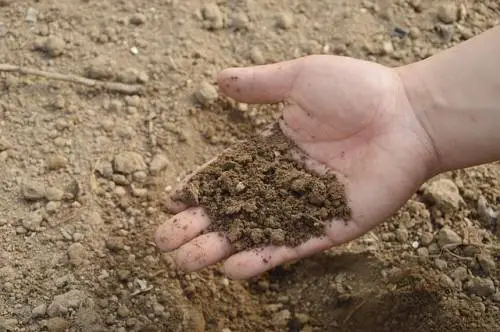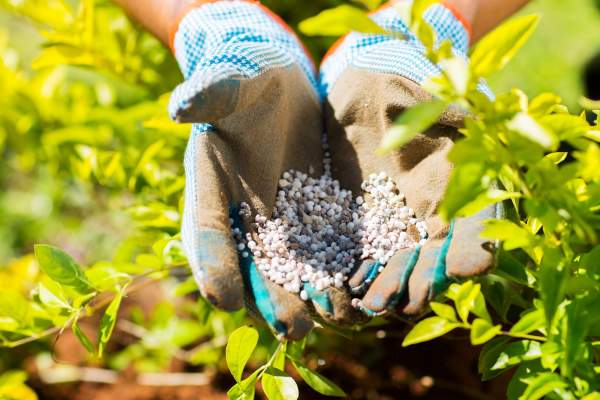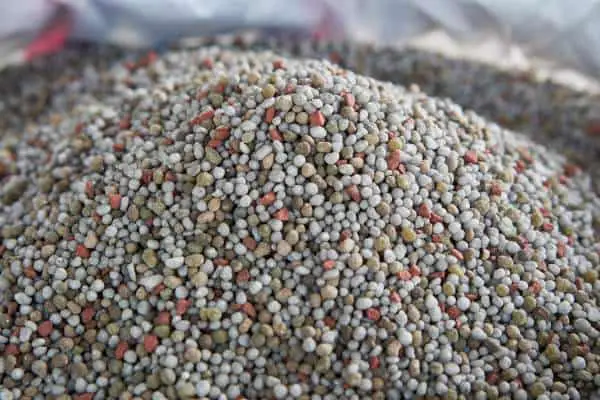Because hydroponics plants are grown without soil, the only way they can obtain their nutrients is through additions to their water supply. Bottles of nutrients are often purchased by the gallon to make it cost-effective, and as a result, they might be standing for an extended period. New users might be concerned, and they have wasted money purchasing larger bottles. Is this the case?
Can Hydroponic Nutrients Go Bad? The good news is, hydroponic nutrients won’t go bad. However, nutrients need caring for and using correctly. If you overdose on nutrients, symptoms are nutrient burn, salt build-up, possible plant death, and you might dispose of nutrients you think are bad.
If you see these symptoms and need to know how to put things right without throwing out your nutrients, it is possible to save your unhealthy-looking plants, and also save your bottles of nutrients, so carry on reading and find out all the answers.
Why Are My Nutrients Separating in the Bottles?
When you purchase your nutrients, there is a chance you might not see any expiration dates on the bottles, although this does depend on the quality of nutrients and the supplier. You might think no expiration date is a bad thing, but it is the first sign that your nutrients won’t go bad.
Once you open your bottles and start using them, you might see precipitates forming on the bottom. These solids are nothing to worry about, and in most cases giving the container, a good shake is enough to dissolve them again, so they become suspended back in the mixture.
These precipitates are compounds that are less soluble than other nutrients, and when left standing, they recombine to form solids. Calcium is the biggest culprit for this. Storing nutrients in a cool dark area with the top firmly fixed is a good practice.
Checking Nutrient Levels
We have determined nutrients don’t go bad for many years, and even then they might be okay to use. Having the correct nutrient levels is crucial because this is what provides your plants with the best chance of growth to their full potential.
Once you begin growing hydroponically, you will need to know what the optimum levels are for your plants, and this determines the levels of nutrients you will be adding. There are a few things that need checking when you come to mix your nutrients and add them to your hydroponic system:
- Parts Per Million (PPM) – This is a standard form of measurement, but in the world of hydroponics, it is a measurement of the total dissolved solids in your nutrient mix. It can also be used to measure how much CO2 is in the atmosphere.
- Electrical Conductivity (EC) – This is the measurement of how conductive a solution is. Using an EC meter, an electrical voltage is passed to your nutrient mix and reads the how high the conductivity from mineral ion motion is being produced. If your EC levels rise too much, it shows your plants are using water faster than the nutrients.
- pH – This is the level of alkaline or acidity of a solution. On most occasions, these readings are taken for water alone, but it is advisable to take readings once your nutrients have been added. While 7.0 is neutral, nutrient solutions are better around 6.5 because nutrients are at their most soluble at this level. You can purchase pH adjustment chemicals which can raise or lower the pH level, and also a digital pH reader so you can do quick readings and adjust as necessary.
- Solution temperature – Temps should be between 65 – 75 degrees. Depending on your climate, you might need to either insulate your reservoir. It is worth noting, if your nutrient mix is too hot, it can breed harmful bacteria, and it won’t do your plants roots any good. If it is too hot, a reservoir chiller might be needed, but these are expensive components to purchase.
Cause and Effect of Nutrient Burn on Plants?
There is a delicate balancing act of 16 different micronutrients and macronutrients to achieve the best plant growth. If your plants become exposed to too many of these, they can get nutrient burn. This more often than not happens when fertilizer salts reach high levels (can be measured by EC meter).
In hydroponic systems, it can be difficult to control because all the plants have the same exposure. To make things more difficult; plants can get nutrient burn when their levels are as they should be. This occurs when a plant is stressed by another factor. This can include pests or diseases, and the plants can’t make use of the nutrients they are offered.
One of the first signs is brown or dead spots that run along the leaf tips and can be separated from the healthy part of the leaf by a yellow halo. Too much nitrogen can make your plants look over lush, and they are full of foliage, but, any fruits can drop early, and a final sign is shriveling root clusters.
If you are growing under grow lights and your plants are too close to the source, the ends of the leaves can burn which gives a very similar symptom. The fix for this is easy, raise the lights or move the plants further away from the source.
Adding Nutrients to Hydroponic Reservoirs Effectively
Nutrient burn can be fixed, and although the affected parts will remain the same, any new growth will be back to normal. This is a case of flushing the system and then re-establishing the correct amount of nutrients. Old nutrients should be flushed from the system, and then clean water is run through for 24-hours.
Once you have fixed your nutrient burn problem, you need to know how to add nutrients most effectively. Here are a few pointers you can follow that will guide you in maintaining the most optimum nutrient levels for your plants:
- Mark the highest point the water reaches in your reservoir (don’t forget to measure the number of gallons you add). Check the level daily, and when you need to add to the tank keep a count of the gallons you add.
- Only top up with pH balanced water, if you add nutrients, you rerun the risk of nutrient burn.
- When you can see you have replaced 50% of your initial nutrient solution through re-filling. Stop adding water and allow the water level to drop until it is just above the top of your water pump. At this point, you can drain and refill with a new batch of nutrients.
If you have an ebb & flow system, you should take this opportunity to flush your pots to remove salts that might have built up. Carefully drench each pot and plant from the top with clean water and let them drain. Clean this out of your reservoir ready for your next batch.
Always fill your reservoir first and then add your nutrients one at a time. These should never be mixed in concentrated form as it can cause lock-out, and prevent some of the minerals from being available.
There are many nutrients on the market, and not all are suitable for each plant type. It is recommended to go for 3-part nutrients. An all-in-one nutrient mix might be convenient, but it can’t give your plants everything they need for their full potential of growth. These deliver the right nutrients at each stage of your plant’s growing life.
What are the Best Hydroponic Reservoir Tips
It doesn’t matter what type of hydroponic system you are using; the nutrient solution is the one thing they all have in common. Here are the best tips to keep the optimum nutrient levels for your plants:
- If the water from your faucet is chlorinated, fill the reservoir or separate mixing bin and let the water sit for 24-hours so the chlorine can dissipate.
- Once you have added your nutrients, let them settle for a couple of hours before checking your pH levels. 6.5 is the ideal pH level.
- The solution needs to be aerated 24/7 to prevent any bacteria building up. This also helps to pass oxygen to the plant roots. An effective aquarium air pump can suffice for this job.
- One tablespoon of hydrogen peroxide added to your reservoir weekly can help cut down on bacteria and algae growth.
Related Questions
Are hydroponic plants healthy?
This has been a debate for many years. It does depend on the nutrients the plants are being grown in. They can be as nutritious as any soil-grown vegetable. Many vitamins are self-made by plants, so these levels don’t vary too much regardless of whether the plant is hydroponically grown or soil grown.
Do hydroponic vegetables need pesticides?
There is no need to use pesticides in hydroponics. Plants grown by this method are less prone to pest attacks. Many growers make use of companion crops, ladybugs, and other useful insects as more natural pest control methods to combat any pests which might attack their crops.
Can I use liquid fertilizer in hydroponics?
Many commercial fertilizers only supply plants with potassium, phosphorus, and nitrogen. Because no soil is used, there is a lot of other nutrients that need adding to the hydroponics liquid fertilizer to help with plant growth.





